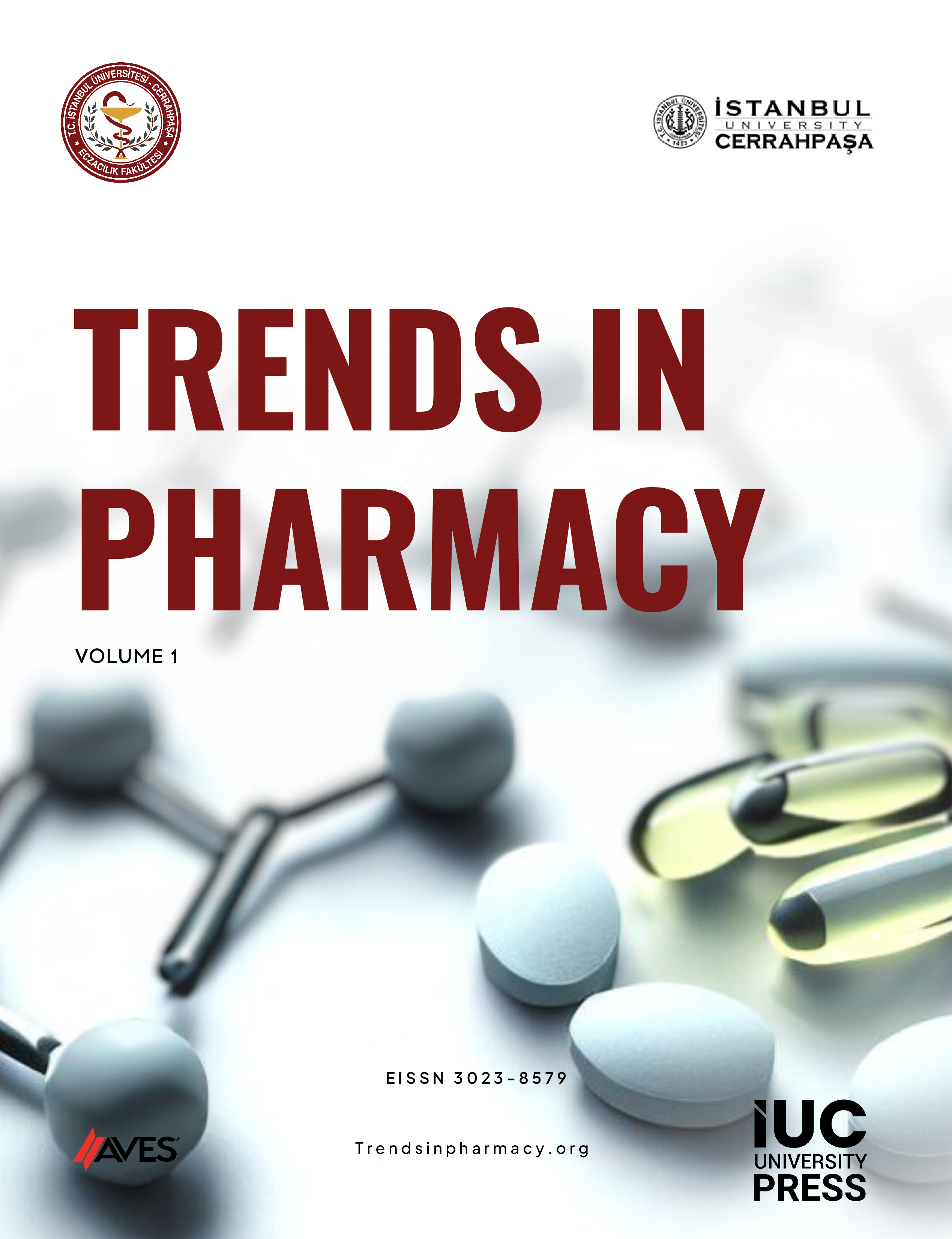
Phytochemical Investigations and Antioxidant Activities of Collema Lichens
Main Article Content
Abstract
Background: Lichens have been widely used in conventional medicine and ethnobotany for years. They produce a variety of secondary metabolites and exhibit various biological activities. The objective of the study is to determine the chemical content of Collema lichens and evaluate their antioxidant activities.
Methods: Blennothallia crispa (Huds.) Otalora, P.M. Jorg. & Wedin (Collema crispum (Huds.) Weber ex F.H. Wigg.) (CCM), Lathagrium cristatum (L.) Otalora, M. M. Jorg & Wedin var. cristatum (Collema cristatum L. Weber ex F.H. Wigg.) (CoCM), and Enchylium polycarpon (Hoffm.) Otálora, Jørg. & Wedin (Collema polycarpon Hoffm.) (CPM) lichen materials were collected from Bursa province and were pre-treated under laboratory conditions. After the thalli of the samples were separated, they were ready for use. An ultrasonic bath was used for extraction and methanol was chosen as the solvent. Determination of carotenoid and phenolic substances was carried out by Liquid Chromatography-Time of Flight Mass Spectrometry (LC/QTOF/MS). In vitro antioxidant activities of the 3 extracts were determined by DPPH and ABTS radical scavenging methods, metal chelation method, and CUPRAC reducing power methods.
Results: According to the results, dihydroxybenzoic acid, vanillic acid, quinic acid, epicatechin, evernic acid, usnic acid, rosmarinic acid, neoxanthin, o-coumaric acid, naringenin, and beta carotene were detected in all 3 extracts: CCM, CoCM, and CPM. It is seen that the most active extract in radical scavenging activity is CPM, with an IC50 value of 234.4 ± 0.21.
Conclusion: It was determined that the contents of the extracts contained substances of phenolic and carotenoid, and it can be concluded that CCM, CoCM, and CPM can all be used as natural antioxidants.
Cite this article as: Sümer Tüzün B & Öztürk Ş. (2024). Phytochemical investigations and antioxidant activities of Collema lichens. Trends in Pharmacy, 2024, 1, 23, doi: 10.5152/TrendsPharm.2024.24023.
Article Details
References
1. Huneck S, Yoshimura I. Identification of Lichen Substances (1). Verlag Berlin Heidelberg: Springer; 1996.
2. Rankovic B, Kosanic M. Lichens as potential source of bioactive secondary metabolites. Lichen Secondary Metabolites. London: Springer; 2015.
3. Sivas HZ. Antigenotoxic effect of some lichen metabolites. In: Lichen Secondary Metabolites. London: Springer; 2019.
4. İşbilir ŞS. Yaprakları Salata-Baharat Olarak Tüketilen Bazı Bitkilerin Antioksidan Aktivitelerinin İncelenmesi. Edirne: Trakya Üniversitesi Fen Bilimleri Enstitüsü; 2008.
5. Tekeli Y. Konya Bölgesindeki Bazı Centaurea Türlerinin Bazı Kimyasal ve Biyolojik Özelliklerinin Belirlenmesi. Konya: Selçuk Üniversitesi Fen Bilimleri Enstitüsü; 2008.
6. Wirth W. Die Flechten Baden-Württembergs. Ulmer: Stutttgart, DEU; 1995.
7. Brodo IM, Sharnoff SD, Sharnoff S. Lichens of North America. New Haven: Yale University Press; 2001.
8. Smith CW, Aptroot A, Coppins BJ, et al. The Lichens of Great Britain and Ireland. London, UK: Natural History Museum Publications in association with The British Lichen Society; 2009.
9. Adams WW, Demmig-Adams B, Lange OL. Carotenoid composition and metabolism in green and blue-green algal lichens in the field. Oecologia. 1993;94(4):576-584. [CrossRef]
10. Zagoskina NV, Nikolaeva TN, Lapshin PV, Zavarzin AA, Zavarzina AG. Water-soluble phenolic compounds in lichens. Microbiology. 2013;82(4):445-452. [CrossRef]
11. Zavarzina AG, Zavarzin AA. Laccase and tyrosinase activities in lichens. Mikrobiologiia. 2006;75(5):630-641. [CrossRef]
12. Esmaeili A, Khodadadi A. Antioxidant activity of a solution of thymol in ethanol. Zahedan J Res Med Sci. 2002;14(7):14-18.
13. Re R, Pellegrini N, Proteggente A, Pannala A, Yang M, RiceEvans C. Antioxidant activity applying an improved ABTS radical cotion decolorization assay. Free Radic Biol Med. 1999;26(9-10):1231-1237. [CrossRef]
14. Apak R, Güçlü K, Özyürek M, Karademir SE. A novel total antioxidant capacity index for dietarypolyphenols. J Agric Food Chem. 2004;52(26):7970-7981. [CrossRef]
15. Decker EA. Phenolics: prooxidants or antioxidants? Nutr Rev. 1997;55(11 Pt 1):396-398. [CrossRef]
16. Popovici V, Bucur L, Popescu A, et al. Determination of the content in usnic acid and polyphenols from the extracts of Usnea barbata L. and evaluation of their antioxidant activity. Farmacia. 2018;66:337-341.
17. Tas I, Yıldırım AB, Özkan E, Ozyigitoglu GC, Yavuz MZ, Turker AU. Biological evaluation and phytochemical profiling of some lichen species. Acta Aliment. 2019;48(4):457-465. [CrossRef]
18. Norouzi H, Azizi A, Gholami M, Sohrabi M, Boustie J. Chemotype variations among lichen ecotypes of Umblicaria aprina as revealed by LC-ESI-MS/MS: a survey of antioxidant phenolics. Environ Sci Pollut Res Int. 2020;27(32):40296-40308. [CrossRef]
19. Yamomato Y, Hara K, Kawakami H, et al. Lichen Substances and Their Biological Activities. Recent Advances in Llichenology. India: Springer; [Chapter:181-199]. 2015.
20. Temina M, Levitsky DO, Dembitsky VM. Chemical constituents of the epiphytic and lipthophilic lichens of the genus Collema. Rec Nat Prod. 2010;4(1):79-86.
21. Parrot D, Peresse T, Hitti E, Carrie D, Grube M, Tomasi S. Qualitative and spatial metabolite profiling of lichens by a LC–MS approach combined with optimised extraction. Phytochem Anal. 2015;26(1):23-33. [CrossRef]
22. Ullah A, William K, Rehman A, et al. Biological evaluation, characterization and distrubition of some lichens of Himalayan region, Pakistan. J Anim Plant Sci. 2015;25:580-586.
23. Jha BN, Shrestha M, Pandey DP, Bhattarai T, Bhattarai HD, Paudel B. Investigation of antioxidant, antimicrobial and toxicity activities of lichens from high altitude regions of Nepal. BMC Complement Altern Med. 2017;17(1):282. [CrossRef]

